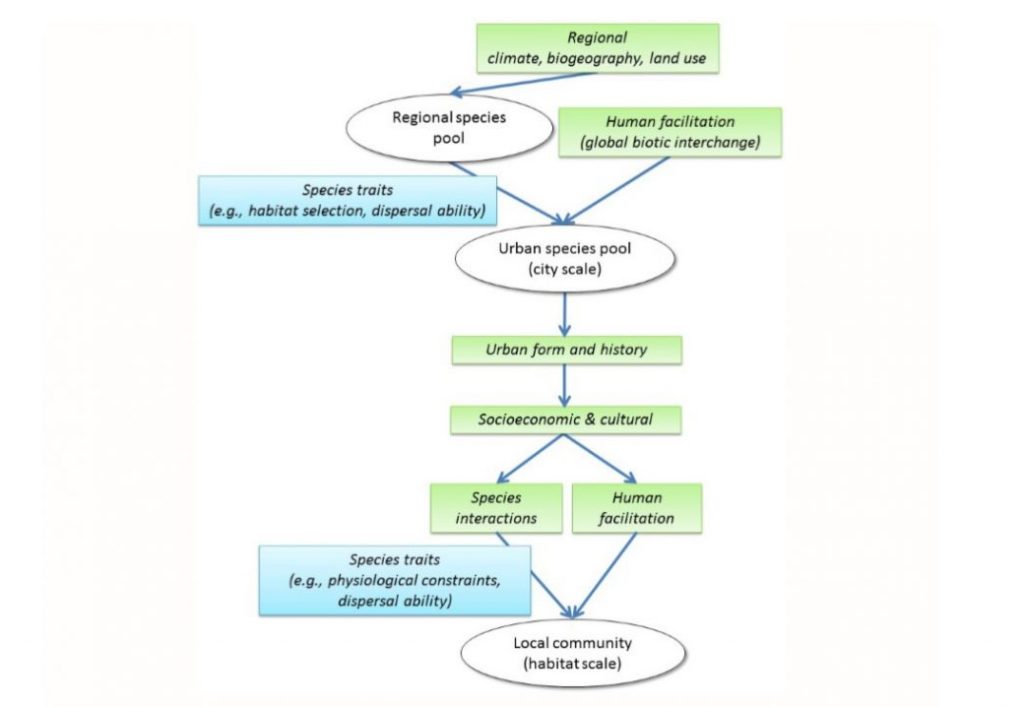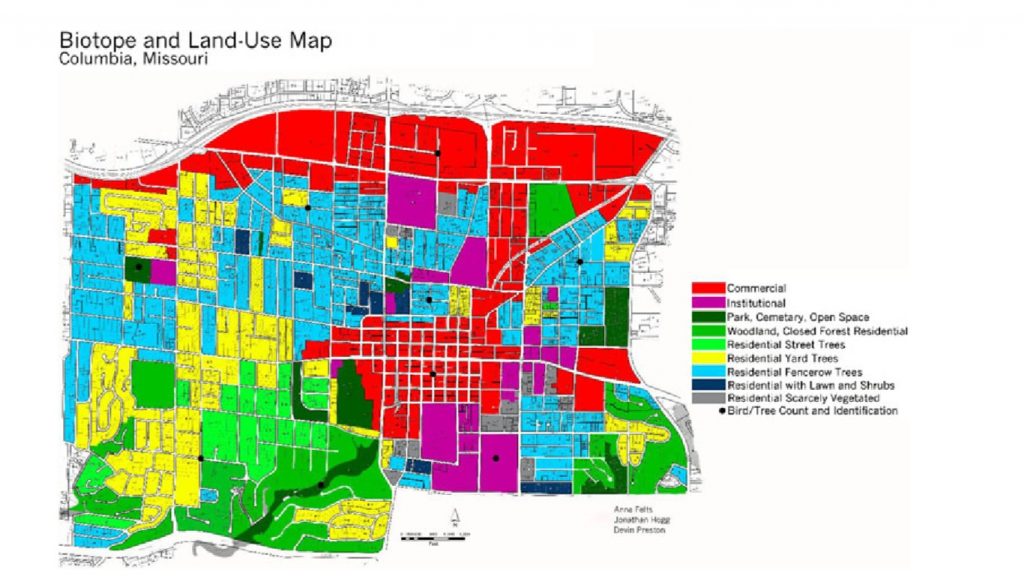
With increasing urbanisation of once wild landscapes, nature is forced to live right on our doorstep. With reports of vicious seagulls, giant rats, and foxes attacking babies, how is wildlife coping with living in the city?
Cities currently comprise around 3% of land globally (Faeth et al., 2011) and as this increases, more research is focusing on the animals we share our cities with. Urban development causes habitat fragmentation, enables the invasion of non-native species, and changes regional climates, which leads to a loss of wildlife. But what effect does the change in the environment have on the remaining flora and fauna?
In Mexico City, the number of bird species has decreased, but the number of birds overall has increased (Ortega-Alvarez and MacGregor-Fors, 2009). This was also found in butterflies in Mexico (Ramirez-Restrepo et al. 2015). Another pattern found in cities is a decrease in the number of species in more developed areas (Faeth et al. 2011). Decreases in the number of species towards the city centre is due to the avoidance of increased pollution, noise and light in these areas (Ortega-Alvarez and MacGregor-Fors, 2009). Artificial lighting affects the behaviour of bats (Hale et al 2015) and many species are sensitive to high human disturbance (Ortega-Alvarez and MacGregor-Fors, 2009). Few species can survive in cities, as they are inhospitable environments. Known as generalists, these species can eat food from more than one source and can survive in several habitats. Food is more available in the form of human rubbish (Ortega-Alvarez and MacGregor-Fors, 2009) which supports a larger abundance of animals. However, this increase in numbers is only seen in generalists, which can make use of this resource.
Which species can survive in a city is determined by hierarchical theoretical filters based on the environment (Aronson et al., 2016). A diagram of this can be seen below.

Generalists are more likely to meet these criteria due to flexibility within their characteristics. The structure of cities greatly impacts the species that live within them (Aronson et al. 2016). Management intensity in gardens is the main factor affecting spider communities, while bird communities are significantly affected by the abundance of woody plants (Sattler et al. 2010). Butterfly communities are structured by distance to city centre, and distance to well-preserved habitat both of which are linked to the overall structure of the city (Ramirez-Restrepo et al. 2015), as shown below:

So cities have massive effects on communities of wildlife. Therefore, is it inevitable that there will be human-wildlife conflicts? Not necessarily – urban wildlife can teach children living in urban environments about the natural world (Faeth et al., 2011). Additionally, increased biodiversity is linked to sustainable development and a reduction in poverty (Nilon, 2011). So although urban wildlife may be viewed as savage scroungers surviving at the fringes of our society, they actually represent a valuable resource.
References
Aronson, M.F., Nilon, C.H., Lepczyk, C.A., Parker, T.S., Warren, P.S., Cilliers, S.S., Goddard, M.A., Hahs, A.K., Herzog, C., Katti, M. and La Sorte, F.A., (2016) Hierarchical filters determine community assembly of urban species pools. Ecology, 97(11), pp.2952-2963.
Faeth, S.H., Bang, C. and Saari, S., (2011) Urban biodiversity: patterns and mechanisms. Annals of the New York Academy of Sciences, 1223(1), pp.69-81.
Hobson, S. (2015) How to photograph urban wildlife, available from: http://www.discoverwildlife.com/wildlife-nature-photography/how-photograph-urban-wildlife [accessed: 15/03/17]
Nilon, C.H., (2011) Urban biodiversity and the importance of management and conservation. Landscape and ecological engineering, 7(1), pp.45-52.
Ortega-Álvarez, R. and MacGregor-Fors, I., (2009) Living in the big city: Effects of urban land-use on bird community structure, diversity, and composition. Landscape and Urban Planning, 90(3), pp.189-195.
Ramírez-Restrepo, L., Cultid-Medina, C.A. and MacGregor-Fors, I., (2015) How many butterflies are there in a city of circa half a million people?. Sustainability, 7(7), pp.8587-8597.
Sattler, T., Borcard, D., Arlettaz, R., Bontadina, F., Legendre, P., Obrist, M.K. and Moretti, M., (2010) Spider, bee, and bird communities in cities are shaped by environmental control and high stochasticity. Ecology, 91(11), pp.3343-3353.
[Word count: 478]
Recent Comments